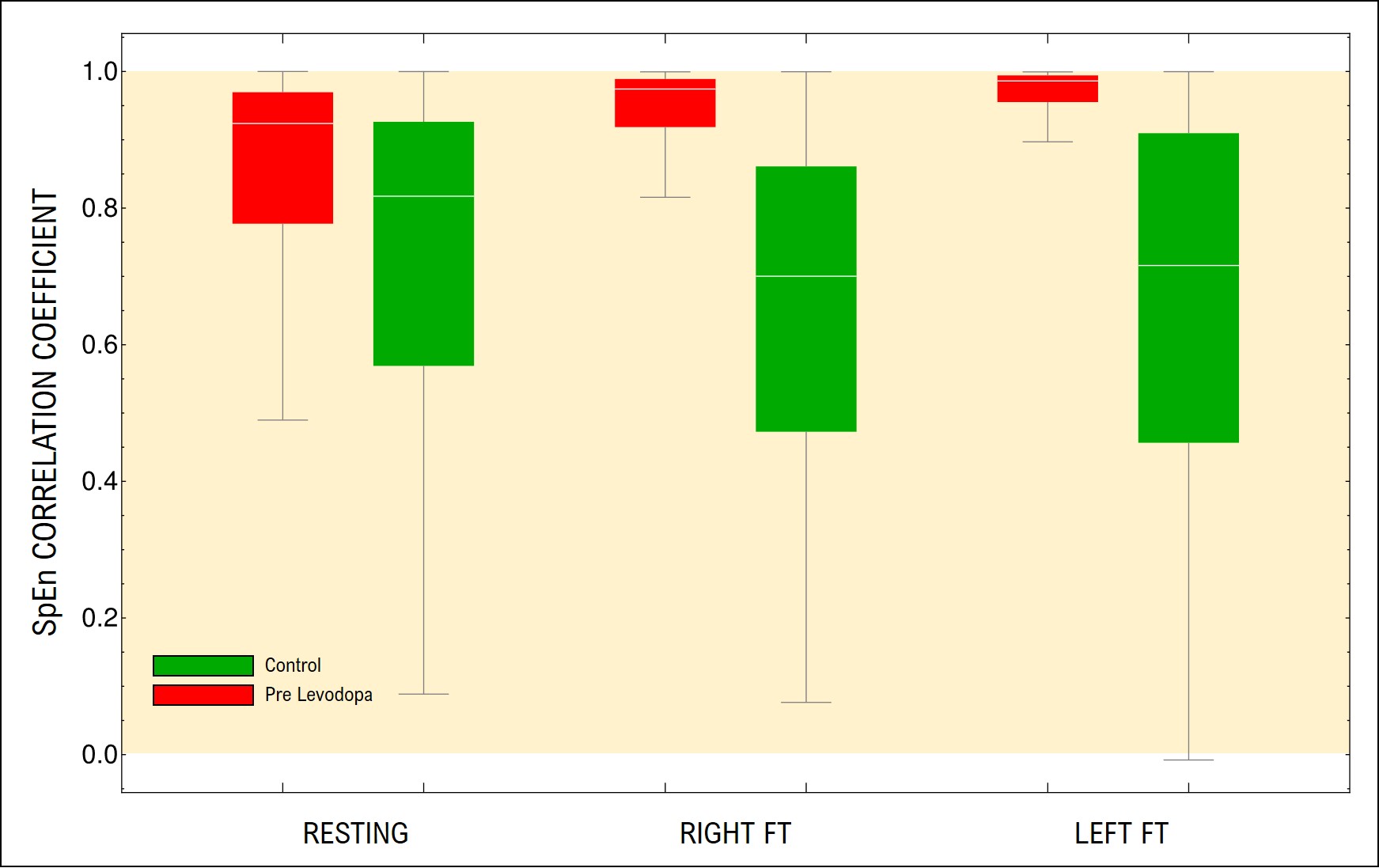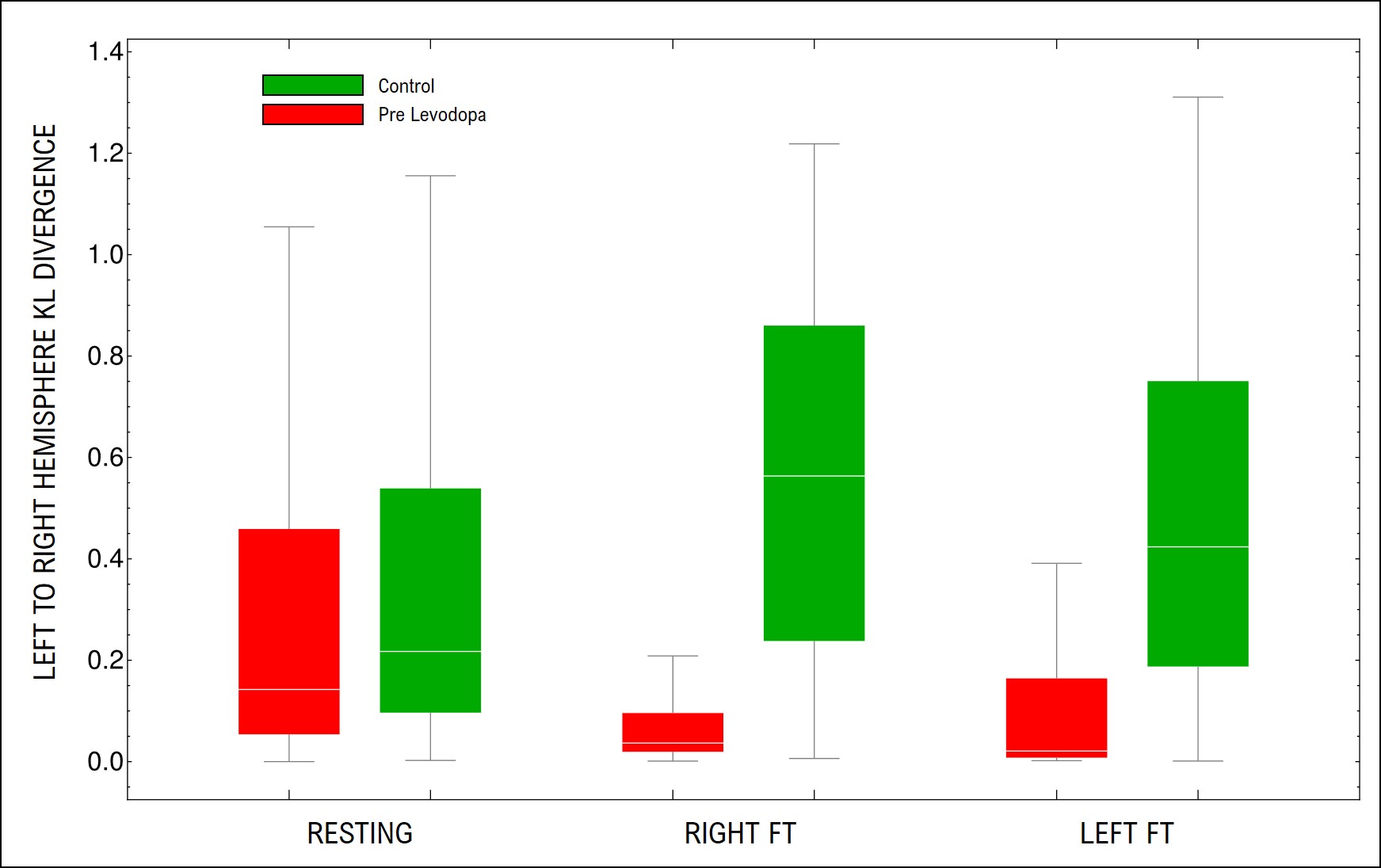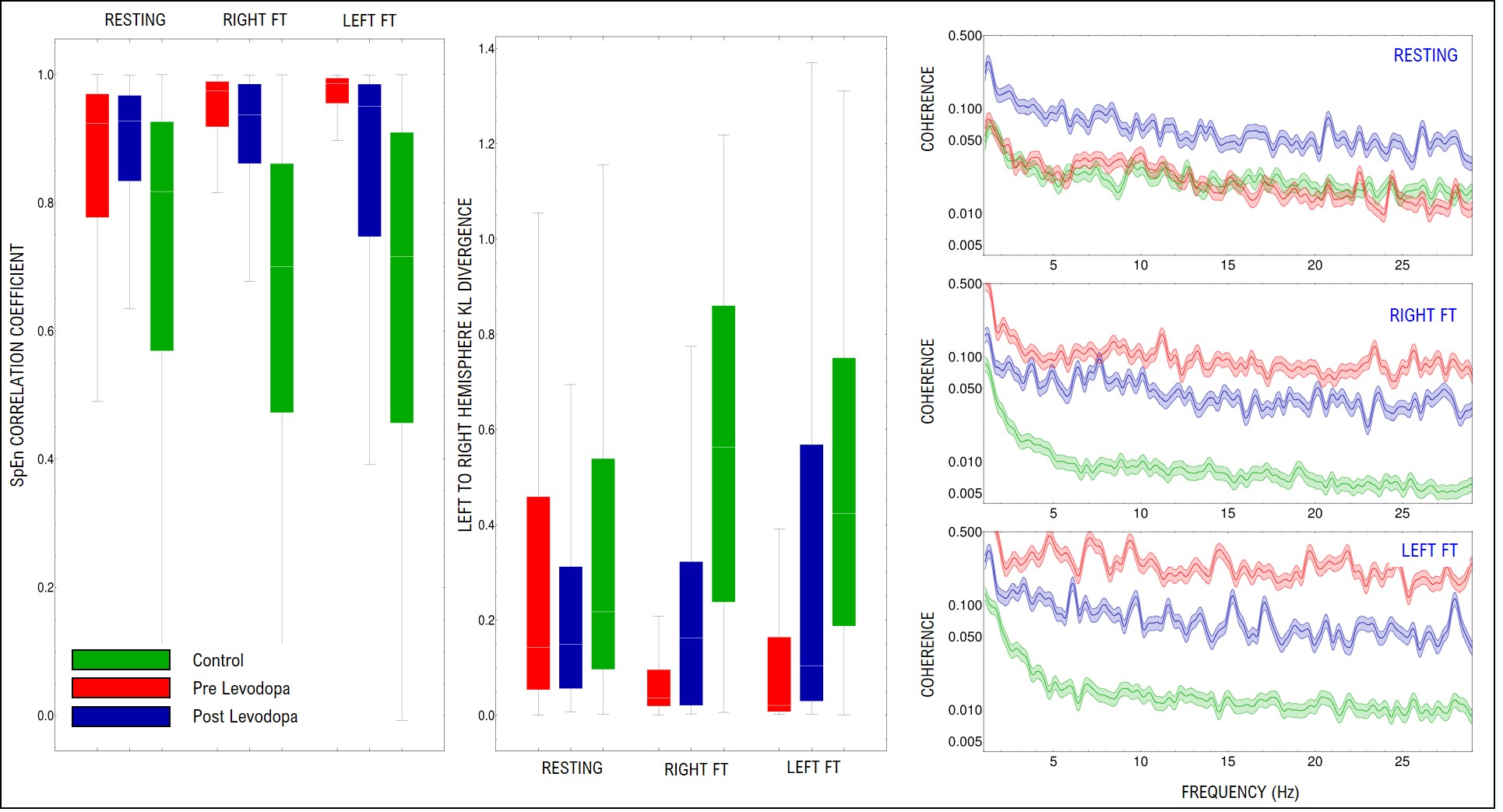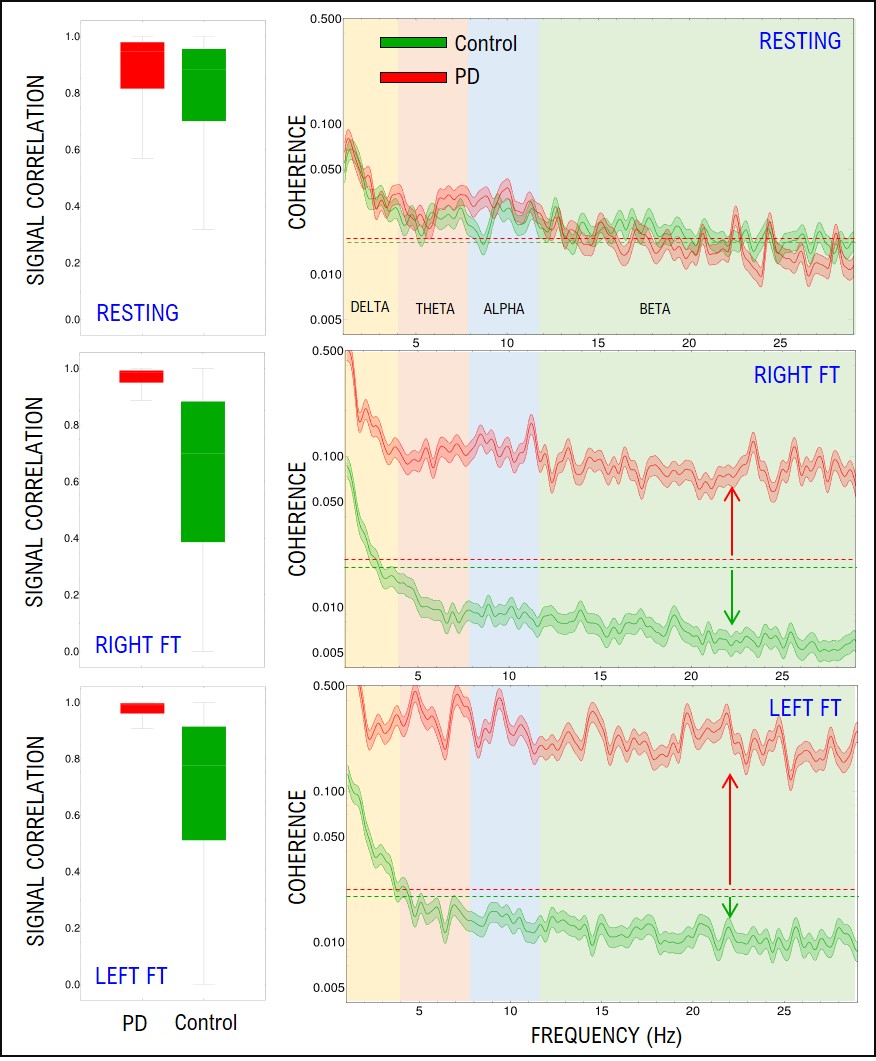Category: Parkinson's Disease: Neurophysiology
Objective: To apply time series analysis techniques to EEG studies to study connectivity changes during motor activation in a cohort of Parkinson´s disease subjects (PD) compared to controls.
Background: Connectivity changes have been targeted as key characteristics of PD and its response to levodopa. The irregularity of the signal is characteristic of EEG. Time series analysis (a measure that sums up frequency changes over a wide range) has not been used up to date to study connectivity changes in PD during motor activation.
Method: A high definition EEG was registered during resting state and unilateral motor activation in a cohort of 6 non demented Hoehn and Yahr I-III PD patients and 6 matched healthy controls. EEG recordings were performed before and after the administration of the first daily dose of dopaminergic medication in PD patients. Spectral entropy correlation, coherence and interhemispheric divergence differences among PD and controls were analyzed in resting state and during motor activation before and after levodopa administration. Time series analysis were performed under the assumption of stationarity.
Results: The correlation coefficient of spectral entropy, nor the coherence found among electrodes were significantly different in resting state of PD subjects compared to healthy controls. Significant differences are found during motor activation showing an increased correlation coefficient in PD and a marked increase in coherence in all frequencies compared to a generalized reduction seen in controls. The Kullback-Liebler Divergence (KLD) of the Spectral Entropy between brain hemispheres was also not different between controls and PD in resting state but a decrease in PD and increase in controls were observed with motor triggering. Levodopa administration modulates the changes produced by motor activation in the values of spectral entropy correlation coefficient, coherence and interhemispheric divergence in PD reducing the connectivity.
Conclusion: Our results could mean that the different cortex areas within a healthy brain can work independently from the rest, while PD brains show more connectivity that is further increased during motor activation. The administration of levodopa does not seem to allow for a full recovery of the control’s values in any case, but it clearly mitigates this anomalous performance.
To cite this abstract in AMA style:
D. Herráez, A. Maitín, R. Perezzan, M.D Castillo, I.J Serrano, A. Arroyo, J. Andreo, J.P Romero. Time Series Analysis Applied to EEG Shows Increased Global Connectivity During Motor Activation in PD Patients Compared to Controls [abstract]. Mov Disord. 2020; 35 (suppl 1). https://www.mdsabstracts.org/abstract/time-series-analysis-applied-to-eeg-shows-increased-global-connectivity-during-motor-activation-in-pd-patients-compared-to-controls/. Accessed December 29, 2025.« Back to MDS Virtual Congress 2020
MDS Abstracts - https://www.mdsabstracts.org/abstract/time-series-analysis-applied-to-eeg-shows-increased-global-connectivity-during-motor-activation-in-pd-patients-compared-to-controls/




